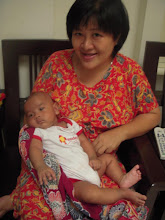This information is taken from “What to expect when you’re expecting” (ISBN 0-7611-2132-3)
Test and When Performed -> Procedure -> Reason
Blood type. First visit -> Examination of blood drawn from your arm -> To determine blood type, Rh type, and Kell factor.
Hematocrit or hemoglobin. First visit and again at 20 weeks -> Examination of blood drawn from your arm -> If test shows iron deficiency or anemia, iron supplement is necessary.
Rubella titer. First visit -> Examination of blood drawn from your arm -> To check for immunity to rubella (German measles).
Syphilis test (VDRL). First visit -> Examination of blood drawn from your arm -> If syphilis infection is present, prompt treatment will prevent harm to fetus.
HIV test. First visit -> Examination of blood drawn from your arm -> Diagnosis and treatment can help the mother and reduce the risk of transmitting HIV to the fetus.
Hepatitis B screen. First visit -> Examination of blood drawn from your arm -> If hepatitis B infection is present, the mother can be treated prenatally, and the infant can be treated immediately after birth.
Pap smear. First visit -> Cervical secretions are collected on a swab and examined under a microscope for abnormal cells -> To check for cervical cancer, or other cell abnormalities.
Gonorrhea culture and genital herpes. First visit -> Vaginal secretions are collected on a swab and cultured in the lab -> If infection is present, it can be treated.
Chlamydia test. First visit -> Area around cervix, urethra, or rectum is swabbed to check for possible infectious organisms -> If infection is present, it can be treated.
Bacteria in urine. First visit -> Urine specimen is examined -> Bacteria in urine can indicate an infection, which would then be treated.
Drug screen. First visit -> Urine specimen is examined -> Any abuse of illicit drugs during pregnancy is hazardous and should be treated promptly.
Blood pressure. Each visit -> Blood pressure is measured with cuff and stethoscope, or with electronic device -> To screen for pregnancy induced hypertension, or preeclampsia.
Sugar (glucose) in the urine. Each visit -> A specially treated “dip-stick” is dipped in a specimen of urine -> Persistent high levels of sugar in the urine could be an indication of gestational diabetes and require further testing.
Albumin (protein) in the urine. Each visit -> A specially treated “dip-stick” is dipped in a specimen urine -> High protein levels in urine could indicate a bladder infection or might be related to preeclampsia.
Triple screen (MSAFP). Between weeks 15 and 18 -> Examination of blood drawn from your arm -> Prenatal diagnosis screening test to check for the possibility of fetal defect and the need for more testing.
Glucose tolerance test. At 28 weeks (usually earlier and more often in diabetics) -> Examination of blood drawn from your arm after drinking a special glucose drink -> To test for gestational diabetes.
Group B step (GBS) test. Around 37 weeks -> A swab of the area around the vagina and rectum is examined. Urine is also examined -> To screen for GBS, which can be treated during labor to protect the newborn.
Actually I did not do all the test only blood type, hemoglobin, rubella titer, HIV test, hepatitis B screen, blood pressure, and sugar in the urine...
Visit http://www.binus.ac.id
25 May 2009
Subscribe to:
Post Comments (Atom)

No comments:
Post a Comment